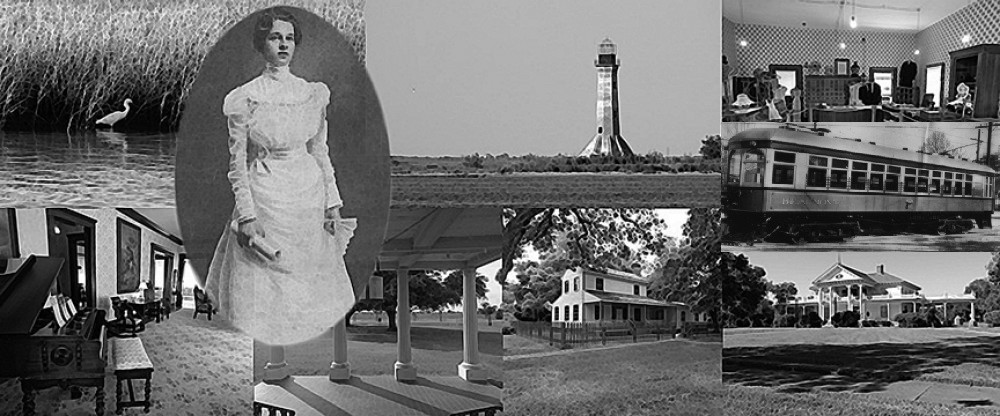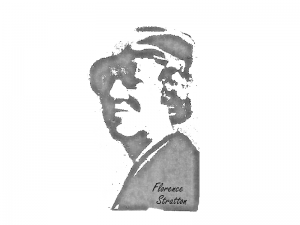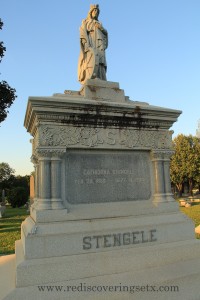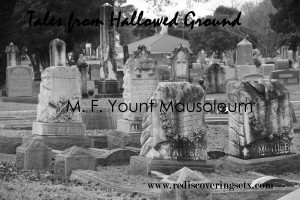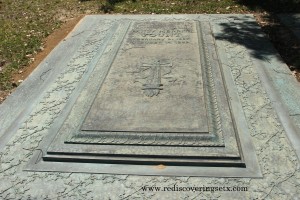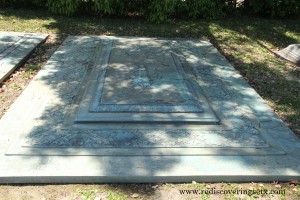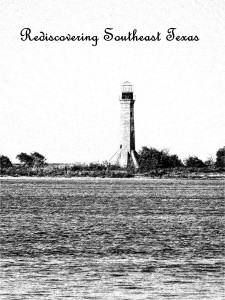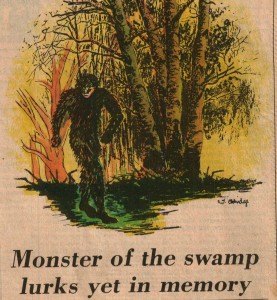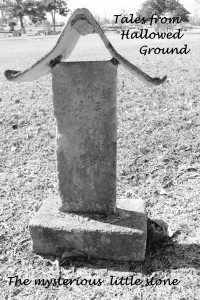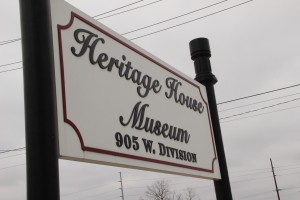My research on the life of Florence Stratton is now in its fourth year. It’s true that I’ve made multiple discoveries in what would seem, at times, a hopeless endeavor, but there always seems to be an open door at the end of the hallway, so to speak. And I have definitely ventured into many of those long corridors.
In late December 2015, after a visit to the Sam Houston Regional Library and Research Center to research historian Bill Quick’s papers, I “quickly” (pun intended) became inspired by how organized he was in his research and how he maintained his notes. Although I never had the pleasure of meeting Mr. Quick when he was alive, I am ever so grateful for his years of documentation of SETX history, especially regarding the Sabine Lighthouse—it appears we shared a mutual love for this structure.
 So as many do, in January I decided to make a New Year’s resolution. I spent countless hours filing, scanning, and digitizing all my files for future use by persons unknown should the need arise. I believe I am nearly through with this growing inventory of information, except for the Florence Stratton Project as I call it. I have scanned and digitized many related files and documents, but three-plus years of research are not always readily available to scan, such as my small two-page file on the city of Ronald, Texas. Nevertheless, most of the files about Florence and her family are stored as PDFs, along with countless newspaper clippings in JPEG (photo) format. Then there are the “Susie Spindletop’s Weekly Letter” articles written using Florence’s nom de plume, which span February 28, 1926 to January 23, 1938. This collection will be a whole new digitizing endeavor, which will mean many weekly trips to the Sam Houston Region Library and Research Center to obtain clearer images. The initial scans from many of the microfilm collections for the Beaumont Enterprise are quite blurry.
So as many do, in January I decided to make a New Year’s resolution. I spent countless hours filing, scanning, and digitizing all my files for future use by persons unknown should the need arise. I believe I am nearly through with this growing inventory of information, except for the Florence Stratton Project as I call it. I have scanned and digitized many related files and documents, but three-plus years of research are not always readily available to scan, such as my small two-page file on the city of Ronald, Texas. Nevertheless, most of the files about Florence and her family are stored as PDFs, along with countless newspaper clippings in JPEG (photo) format. Then there are the “Susie Spindletop’s Weekly Letter” articles written using Florence’s nom de plume, which span February 28, 1926 to January 23, 1938. This collection will be a whole new digitizing endeavor, which will mean many weekly trips to the Sam Houston Region Library and Research Center to obtain clearer images. The initial scans from many of the microfilm collections for the Beaumont Enterprise are quite blurry. 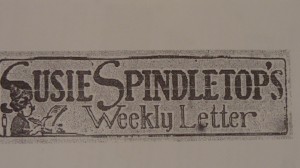
I have also realized that field trips are a necessity. Given the timetable, genealogy, and friendships in Florence’s history, I found it important to proactively explore these sites, cities, and research hubs. And it was in Austin that I began my journey over the road. On Monday January 25, I stepped into the Dolph Briscoe Center for American History. The center holds many historic treasures—so much so that I could spend months, or even years, sifting through them. Since I only had a day, I decided to focus on W.P. Hobby Sr.’s papers. W.P. Hobby was the Governor of Texas from 1917 to 1921. At the time, he was the youngest governor ever to hold the office in the state. Hobby also had many local ties to Beaumont. He became the manager and part owner of the Beaumont Enterprise in 1907 and married Willie Cooper, the daughter of the U.S. representative Sam Branson Cooper, on May 15, 1915. At various points in Florence’s timeline, I noticed she spent time with Willie Cooper in Washington D.C. (1907–1908) or in the Governor’s Mansion in Austin (1917–1921). Other newspaper articles described her attendance at many functions with the Governor and First Lady, from a Turkey trot in Cuero to the inauguration of the Mexican president Álvaro Obregón.
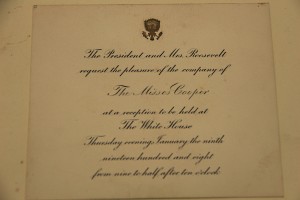 In one of the two boxes I requested, I found a scrapbook that once belonged to Willie. After looking at all the newspaper clippings and other memorabilia, it certainly put what I’d been studying into perspective. Between the clippings and other historical artifacts, I located an invitation addressed to “The Misses Cooper” dated January 9, 1908. It reads as follows:
In one of the two boxes I requested, I found a scrapbook that once belonged to Willie. After looking at all the newspaper clippings and other memorabilia, it certainly put what I’d been studying into perspective. Between the clippings and other historical artifacts, I located an invitation addressed to “The Misses Cooper” dated January 9, 1908. It reads as follows:
The President and Mrs. Roosevelt request the pleasure of the company of
The Misses Cooper
At a reception to be held at
The White House
Thursday evening January the ninth
Nineteen hundred and eight
From nine to half after ten o’clock
Holding something like that in your hand can be inspiring to say the least. Both Willie and Florence attended the White House reception in January the following year as well. I know this thanks to an article in the Washington Post dated January 8, 1909.
I made many discoveries that day. Most of the scrapbook concentrated on W.P. Hobby becoming lieutenant governor and eventually governor when James E. Ferguson was removed from office. I also noticed a lot of content on women’s suffrage (women’s right to vote). Unlike others, Hobby saw the benefits of this early. There is one letter to the editor of the Beaumont Enterprise in Willie’s scrapbook. We’ll call him Pete (because that is how he signed his name in the letter). Pete was hell-bent on not giving women the right to vote. He talked of the curse of Jehovah God “by harkening to the voice of women, and giving to the ballot.” He also quoted the Apostle Paul and the like, but it would have been pointless to spend one more iota of time on this jackleg. It is interesting to ponder just what Mr. Pete would have thought when a woman, Miriam Amanda “Ma” Ferguson, was elected Governor of Texas in 1925. A possible coronary, I would imagine.
I assume Willie saved this letter as a reminder of how important this era was for women, and through the newspaper articles, I was also able to get a small glimpse of Florence’s journey. In September 1918, she was listed as one of 31 vice chairpersons for the senatorial districts for the Democratic Party.
My next field trip will be to the place Florence treasured most, her place of birth, Brazoria County. Florence was born on March 21, 1881 at her childhood home in Brazoria, Texas, which in later years she revisited regularly in “Susie Spindletop’s Weekly Letter.” Her popular column was published each Sunday, and in this, she also spoke highly of her grandfather, Major Asa Evan Stratton, who owned a sugarcane plantation.
My other ventures into her past will this month include a visit to Woodville to find any more sources relating to Willie Cooper that may be traceable to Florence, a revisit to Austin to peruse more of W.P. Hobby’s papers, and then the inevitable journey to Troy, Pike County, Alabama. 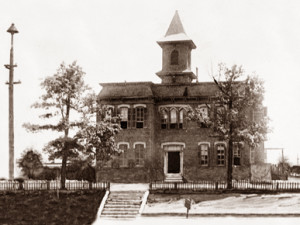
Contrary to most articles about Florence, she graduated from Troy Normal College and not Gray Normal College as W.T. Block noted in his earlier writings. In fact much of Florence’s lore is inaccurate, and I’m still sorting through the mess. This is not to discredit Mr. Block on this subject; he was blissfully unaware that the recollections of his primary source, Florence’s niece, were wholly inaccurate. I personally have no knowledge of the atmosphere or Eunice’s mindset when she was interviewed for the articles published in the Texas Gulf Historical and Biographical Record, but most of the “facts” were just plain wrong.
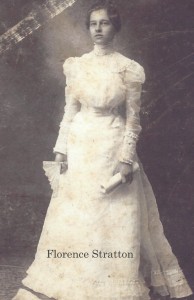 Luckily, with time, Florence’s past is emerging in the form of documented proof on how she spent her life, and how she was a positive resident who was loved by all. Many of my early questions have been answered, but there is still a mountain of research to climb. Some readers have asked what I plan to do with all this research. Well, it is no secret that I intend to submit a marker application to the Texas Historical Commission (THC) in 2017 to celebrate a life that deserves recognition in SETX history. Indeed, Florence’s contributions to Beaumont history, society, and charity cannot be matched.
Luckily, with time, Florence’s past is emerging in the form of documented proof on how she spent her life, and how she was a positive resident who was loved by all. Many of my early questions have been answered, but there is still a mountain of research to climb. Some readers have asked what I plan to do with all this research. Well, it is no secret that I intend to submit a marker application to the Texas Historical Commission (THC) in 2017 to celebrate a life that deserves recognition in SETX history. Indeed, Florence’s contributions to Beaumont history, society, and charity cannot be matched.
Category Archives: History
Tales from Hallowed Ground: Catherina Jeanette Stengele
My first introduction to Miss Stengele was on a cold morning during a walk through Magnolia Cemetery. As the story goes, she was a lowly seamstress who worked hard to save her money. In her short 43 years of life, she purchased a costly St. Catherine of the Wheel statue for her mausoleum, along with the twelve plots near her intended resting place, all of which she had tiled in.
Sounds like an amazing story, right? Well it is, so let us throw the rumor out and try to ascertain the facts.
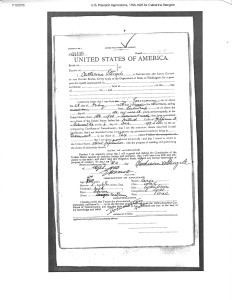 Early Beaumont was home to an entrepreneur in the form of the youthful Miss Stengele. According to her naturalization form, she arrived in this country in 1884, spent a few years in Baltimore learning the millinery business, and then moved to Beaumont in the late 1880s. The form also shows she was born on February 28, 1856, and not 1866 as stated on her mausoleum. (I suppose, even in death, some need to hold onto their youth.) Her country of origin is also unclear because of contradictory documentation. I have found some papers stating that she was from Germany. Others indicate that she was from Holland. My belief is that she was probably born along the present German–Holland border, which was initially a part of Germany but later became Holland.
Early Beaumont was home to an entrepreneur in the form of the youthful Miss Stengele. According to her naturalization form, she arrived in this country in 1884, spent a few years in Baltimore learning the millinery business, and then moved to Beaumont in the late 1880s. The form also shows she was born on February 28, 1856, and not 1866 as stated on her mausoleum. (I suppose, even in death, some need to hold onto their youth.) Her country of origin is also unclear because of contradictory documentation. I have found some papers stating that she was from Germany. Others indicate that she was from Holland. My belief is that she was probably born along the present German–Holland border, which was initially a part of Germany but later became Holland.
Miss Stengele was certainly competent in the world of business. As a single woman in the 1890s, she made a good living in her millinery business, and other ventures in the financial and real estate sectors also seemed to work well for her. She was so successful in finance that she placed an ad in the Beaumont Journal in May 1899 stating that she was “Going to quit the business! I am going to quit the millinery business, and from the date will sell my entire stock at very low prices.”
Catherina Jeanette Stengele seemed to be a natural at finance and the lending market. So much so that she quit her day job, so to speak. Her investments would even finance a return trip to Europe in 1901. See the article in the Beaumont Enterprise dated January 6, 1900. 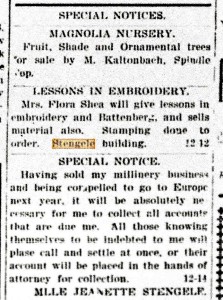
You may notice the name Stengele Building, highlighted in yellow above the article. Miss Stengele also owned a three-story brick building at 345 Pearl Street in Beaumont, which had housed her millinery shop as well as several of her tenants.
While records from 1900 until her death in 1909 tell a tale of a successful businesswoman, not every investment would always go as planned. For instance, around 1905–6, records of court proceedings show the bankruptcy of the Nederland Rice farms in which she held a $20,000 stake. Unfortunately I haven’t yet had the time to research the court files in detail, but this is on my to-do list.
In April 1909 Miss Stengele left Beaumont for Los Angeles because of an illness. An article from the Houston Post dated September 16, 1909 states she “underwent two surgeries for appendicitis during the summer.” Unfortunately Miss Catherina Jeanette Stengele had passed away the day before the article was printed, on September 15, 1909.
I found a few articles from the Beaumont Journal that explained the highlights of life and the aftermath of her death, but her will is undoubtedly of considerable interest. According to hearsay, she was at odds with one of her brothers and left him nothing, but technically that’s not true. Browsing through her will, I found that she did leave a detailed list of her heirs and her final wishes. Her wish for the St. Catherine of the Wheel statue was originally included in the first draft of her will in 1908, but the mausoleum was only added in May 1909. She had many family members, both locally and in Holland, to whom she bequeathed her wealth. Her assets were around $120,000. That’s the equivalent of $3.1 million today. Not too bad for a lowly seamstress… or should I say, a milliner?
M. F. Yount Mausoleum
Magnolia Cemetery is full of marvelous statues, monuments, and mausoleums, which are lasting tributes to the who’s who of Beaumont history. I admit I have spent more time there, strolling through this majestic locale, than at the many other SETX cemeteries that I haunt. For me it has always been a special place. Unfortunately, one of the most stunning memorials to grace this hallowed ground no longer stands. Why? Let us delve into the story.
Miles Franklin Yount was born in Arkansas in January 1880. At age 15 he moved to Texas and began working in the rice and oil fields. Eighteen years later, he formed the Yount Oil Company, which became the Yount-Lee Oil Company in 1915. In that same year he married Pansy Merrit. In 1925 one of his wells struck oil and thus began Spindletop’s second oil boom. 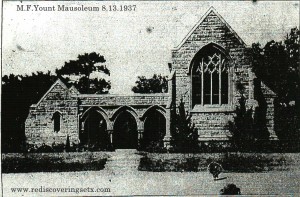
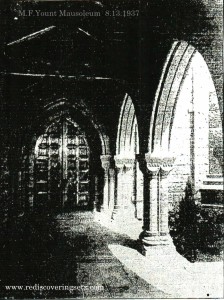 Frank Yount was known as the “Godfather of Beaumont” because of the aid he provided for building projects in the city of Beaumont in the late 20s and early 30s. He even loaned money to the city to meet its payroll demands in 1932.
Frank Yount was known as the “Godfather of Beaumont” because of the aid he provided for building projects in the city of Beaumont in the late 20s and early 30s. He even loaned money to the city to meet its payroll demands in 1932.
Sadly, in November 1933 Yount perished from a sudden heart attack. Pansy, his wife, decided to build a huge mausoleum in honor of her dear departed husband, but one day, while walking through the mausoleum, she noticed a bit of debris on the floor. Fearing its eventual collapse, she asked the architect how long the mausoleum would remain standing. The architect replied that it would be good for around 500 years. To Pansy, this was not long enough, and she had the mausoleum torn down. Both are now buried side by side in bronze vaults on the same grounds where the mausoleum once stood. I have no idea how long these vaults will last, but as you can see by the photos of the mausoleum, it is a shame that this is not still standing. Nevertheless, Pansy has her own story, and I can only respect what may have been going on at the time.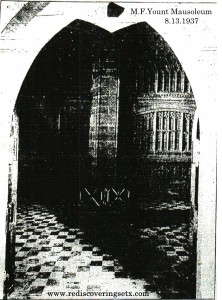
Sources: Handbook on Texas, Judith Linsley, Beaumont: A Chronicle of Promise
Rediscovering you’re two years old.
Well, another milestone has been reached here under the oaks at ye olde Block Farm. Rediscovering SETX has turned two! First, I would like to thank all who read our blog, follow us on Twitter, or have liked us on Facebook. Your input and support makes bringing SETX history to those who might otherwise not know of our interesting past even more a labor of love. As in our first year, over the past twelve months we’ve met and heard from many wonderful SETXans, been to many great places, and learned more and more from all of you.
We learned the trials and tribulations of life in Jefferson County during World War II. We discovered who Tom “the Tramp” was and delved into the fascinating life of Port Arthur’s Evelyn Keyes via out new monthly segment Tales from Hallowed Ground. But my favorite article has definitely been from a reader who shared her grandmother’s journey to Port Arthur in 1905. Blanche Morgan’s story provides a captivating account of the hardships and successes of a widowed mother of four in the early 1900s. Finally, it was fitting to investigate architect Nicholas Clayton’s marvelous legacy of Galveston architecture for the 40th anniversary of the Galveston Historic Homes Tour.
The Places
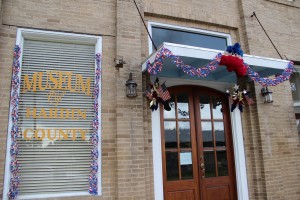 Since its creation in 2012, Rediscovering SETX has strived to promote SETX museums and historic houses, as well as its history. Well, this year was no different, and we explored many magnificent places. Here are some of the highlights:
Since its creation in 2012, Rediscovering SETX has strived to promote SETX museums and historic houses, as well as its history. Well, this year was no different, and we explored many magnificent places. Here are some of the highlights:
I was fortunate to be invited to the grand opening of a marvelous museum in Kountze called the Museum of Hardin County. The museum opened its doors in August, after years of hard work and determination by the Hardin County Historical Commission and its members. Another prized invitation from Hardin County was to the Terry Bertha Cromwell Museum located in Sour Lake. 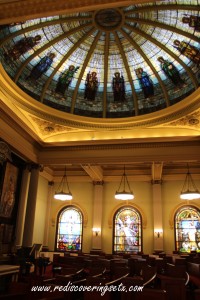
In Orange County, we discovered the Heritage House Museum and did an awe-inspiring tour of the Lutcher Memorial Church Building; I must say that this is one of SETX’s greatest treasures.
Other memorable sites include the Beaumont Police Department Museum, Clifton Steamboat Museum, Christmas at the Pompeiian Villa, the Women’s Club of Beaumont, Heritage Village (Woodville), Liberty Opry (Liberty), Polk County Museum (Livingston), Bayou Bend (Houston), Bishop’s Palace (Galveston), and finally Galveston’s 40th Annual Historic Homes Tour.
History
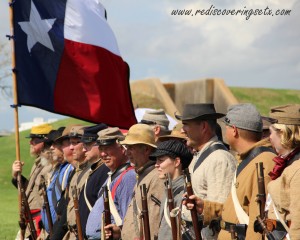 We also attended some notable historic celebrations, memorials, and fun reenactments. Dick Dowling Days turned 50th in September, and this coincided with the 150th anniversary of the Battle of Sabine Pass. The Liberty County Historical Commission did a wonderful job of treating a few of its esteemed residents, who forged the grounds of what is today Liberty County, with the “Whispers from the Past” tour in October. It was both inspiring and entertaining.
We also attended some notable historic celebrations, memorials, and fun reenactments. Dick Dowling Days turned 50th in September, and this coincided with the 150th anniversary of the Battle of Sabine Pass. The Liberty County Historical Commission did a wonderful job of treating a few of its esteemed residents, who forged the grounds of what is today Liberty County, with the “Whispers from the Past” tour in October. It was both inspiring and entertaining. 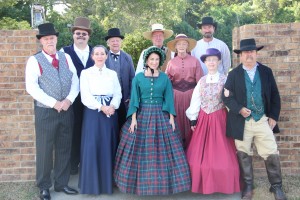
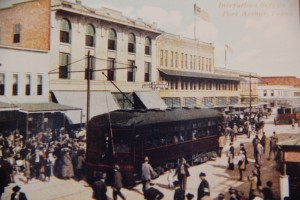 In December, the 15th, to be exact, it was the 100th anniversary of the Interurban. (The Interurban was an electric train that ran from Port Arthur to Beaumont for 19 years, between 1913 and 1932.) Unfortunately. little is left of this SETX achievement, and very few know of its existence. We were glad to be able to shine a light on this awesome part of our past.
In December, the 15th, to be exact, it was the 100th anniversary of the Interurban. (The Interurban was an electric train that ran from Port Arthur to Beaumont for 19 years, between 1913 and 1932.) Unfortunately. little is left of this SETX achievement, and very few know of its existence. We were glad to be able to shine a light on this awesome part of our past.
In January, the 113th anniversary of Spindletop was celebrated at Gladys City with the Driller’s Reunion. And what a splendid time was had by all. I bet even the Temperance ladies had an enjoyable time!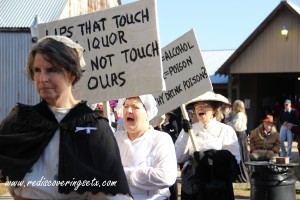
Future
As in the first two years, we will continue to visit and promote what SETX has to offer. Our little part of the world is rich with history, and we think it should be communicated to all and sundry. So if you know of a museum, historic home, or any other part of our history that you think should be given some online airtime, then please send us your feedback and suggestions. You can contact me by email at rediscoveringsetx@gmail.com. Alternatively, you can also leave a comment on our Facebook page, Flickr, or @RediscoveringSE on Twitter.
Here’s to another remarkable year of rediscovering SETX!
Growing up in Port Arthur in the 70’s
A few things come to mind when I look back on growing up in Port Arthur in the 70s and early 80s. For example, I remember walking to school across Pioneer Park and past the fireman’s training facility. The latter is particularly noteworthy because my father was a firefighter. I recall him telling me of the time he climbed the big blue water tower next door to the training facility. He made it halfway up before the ladder curved backward. I’m sure he felt as if he were climbing monkey bars 100 feet up. He descended back to the ground—I have no doubt that was the last time he ventured upward. And I don’t blame him. His lack of appreciation for heights runs in the family.
Pioneer Park was a nice place to visit, but I always enjoyed our trips to Rose Hill Park, which is located on Woodworth Boulevard and Proctor/Procter Street (I still don’t know how to spell Proctor since the spelling is different depending on which avenue you’re on). I remember climbing “the Rocket,” which was three tiers of awesome. When I was eight, it was the ultimate rocket ship in which to blast into space.
I always thought it a treat to walk through Alston’s Nursery on Ninth Avenue (earlier residents may remember this as Eagleson’s Nursery) while my dad was picking out Better Boy tomatoes to plant in our clay- and shell-filled soil-garden. All jokes aside, they did grow! Having said that however, it must have been due to the rabbit poo. (For a time we also had a rabbit.)
Thinking back, I can remember that we spent many days on Ninth Avenue, especially Saturdays. Saturday was grocery shopping day and that meant Howard’s! For many residents, Howard’s was the all-stop shop. It even had a great eatery called J.P.O.T.S. (or Just Part of the Store). I think most will remember Howard’s for its covered parking lot. How many grocery stores have you been to that have a covered parking lot? Thank you, Howard Hatfield!
Living on 20th Street (how many people know where 20th Street is without looking at a map?) meant coexisting with the ever-present trains, but we spent much of our time going up and down the tracks. Whether it was picking blackberries, walking to the train bridge, or sliding down the large pile of limestone on a plastic baby pool that someone had left at the old Sears warehouse, these are good memories indeed.
Probably one of my fondest memories of this creosote-smelling railway line was the adjoining bike trail located at the back of St. Mary’s Hospital. One could spend hours riding up and down this ditch, which had a large pipe and a cement wall that looked out of place, but we didn’t care—we were doing good to not run over a snake or two. Years later I would discover that this was part of where the Interurban ran between 1913 and 1932. I’m still uncertain if the cement wall and its railing were part of the Interurban, or possibly a leftover from an old KCS track. Time and more digging will tell.
Speaking of the Interurban, in the same way as we would roam the tracks on foot, so we would ride our bikes under the high lines. Most people will know the huge electrical poles that start at the big blue water tower located at St. Mary’s Hospital and run behind (what was then) Weingarten’s on 25th North, cross Ninth Avenue, and eventually end near Gladys City, Spindletop, in Beaumont. This was the route the Interurban took so many years ago. Not too many people know this.
I just mentioned Weingarten’s. One of our most frequent stops was at a store called T.G. & Y., located in the Weingarten-owned Village Shopping Center. In fact, it was a daily stop for us—that is, unless we weren’t at Ace Hobby Shop a block away, looking at model kits of all sorts, or at the Tropical Fish Store a few streets down.
As for going to a movie theater, I vaguely remember going to the Don Drive-In once or twice. I do not recall what we saw, but I still remember the place every time I pass its location. Mostly, we frequented the Village (on 16th Street and Gulfway Drive), the Port (Ninth Avenue), or the Park Plaza (36th Street).
Many of you will have similar memories of your SETX town. These memories are a part of us all and should be shared. Please feel free to comment here or on our Facebook page. We always look forward to your input.
Monster of the Swamp: Bigfoot in SETX?
A few weeks ago, I was listening to one of my favorite podcasts, Extreme Wildlife Radio. (For those who do not know what a podcast is, it’s basically a radio show that you can upload to your iPod or other listening devices.) Extreme Wildlife Radio is a local podcast hosted by journalist, author, and SETX wildlife expert Chester Moore, along with Terri Werner, Director of Operations at the Tiger Creek Wildlife Refuge in Tyler, Texas.
I will start off by saying that I love the content of the show. It is, as its name suggests, about wildlife. Whether it’s big cats, black bears, wolves, or our many species of fowl in SETX, the show does a great job of promoting and presenting historic facts about our wildlife. With that said, I also love the other side of wildlife that comes up from time to time. During the week in question, the topic was “Bigfoot: A Roundtable Discussion.”
Bigfoot? What do I know of this so-called primate that has eluded visual documentation for hundreds of years? Absolutely nothing! As a child growing up in the early 70s, I remember having dreams about this creature visiting and peeking in the window. I had always wondered why I thought this—until I came across another podcast talking about the Boggy Creek Monster. I found out the movie had been released around 1974. This would fit the timeframe of my childhood puzzle, and I have a sneaking suspicion that one of my older siblings (whom I shall blame only for convenience) saw the movie, and I had overheard her description of this frightful documentary. Other than this scenario, I have never really been interested in this thing called Sasquatch, Bigfoot, or Yeti.
Well, there was that TV episode of The Million Dollar Man that . . . On second thought, let’s skip that. 
Last year, one of our SETX residents was visiting Oak Bluff Cemetery in Port Neches. He claimed to have seen, and also photographed, two “primates,” which he called Bigfoots. Unfortunately, as always, the photos are blurry, and nothing in them is distinguishable. I frequent this part of Oak Bluff Cemetery, and I also have photos. Many clear photos, in fact, of the same area where our primate friends supposedly spent an afternoon skipping rocks. Honestly, I have never seen anything other than a beautiful sunset in this bayou, but to each his own.
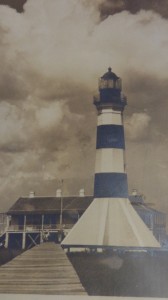 So, is there an actual documented historical record of something in our area that fits the description of a hairy man who walks, undetected for the most part, through SETX swamps—besides possibly Boudreaux or Thibodeaux? Well no, not that I believe, at least in these times, but there is an article in the Port Arthur News dated October, 31, 1984, by staff writer Peggy Slasman. Slasman had interviewed a Port Arthur resident whose father was the Sabine lighthouse keeper in 1905.
So, is there an actual documented historical record of something in our area that fits the description of a hairy man who walks, undetected for the most part, through SETX swamps—besides possibly Boudreaux or Thibodeaux? Well no, not that I believe, at least in these times, but there is an article in the Port Arthur News dated October, 31, 1984, by staff writer Peggy Slasman. Slasman had interviewed a Port Arthur resident whose father was the Sabine lighthouse keeper in 1905.
The story began as the fog rolled over the marsh, and the lighthouse keeper’s 10-year-old daughter stepped out on the porch to enjoy her favorite time of day. Unfortunately, this morning was different. The silence of the early morning was broken by movement in the marsh. She peered out over the railings, wondering what could be lurking near, when suddenly, she saw something so terrible that she screamed and fainted.
Her parents later found and revived the child. Both dismissed their daughter’s story as a figment of her wild imagination, but they couldn’t help but notice her obsession with her tale.
A month later, the lighthouse keeper was hunting in the marsh when he heard movement in the reeds. He crouched down and stared in the direction of the sound. To his dismay, there stood an eight-foot hairy, dark, and ugly “thing” that scared the lighthouse keeper so much that he ran away toward the safety of the lighthouse, forgetting his loaded rifle in his haste.
The monster was seen by others 12 times that year, but it never harmed anyone. Most Sabine residents believed it to be a bear, and that is indeed quite possible, but one can only speculate. That same year, a storm flooded the marsh, and the beast was supposedly drowned or washed out to sea. However, according to Slasman’s article, there are those who say it still lurks in the marsh . . .
So, do I believe there is a hairy primate living amongst us here in Jefferson or the lower portion of Orange County? Probably not, but you never know what lurks in places like the Big Thicket. There are many different species of animals living undisturbed in our dark forests, so it may be quite possible. With that said, I will take this opportunity to reach out to the other amateur paranormal, cryptozoologist ghost hunters out there and recommend that they take photography classes. Blurry is bad!
Blanche’s Journey: An Early Look at Life in Port Arthur
In February of 1905, as winter’s hold clamped down hard on Mason City, Iowa, Blanche’s mother lay sick with a high fever. As the doctor looked on, he knew her health would not improve if she continued to live in the Corn Belt state.
“Mr. Rowley, you will have to leave the North. You have got to go to a warm climate near a sea shore if your wife is to get well,” explained Doctor Marston.
And so this is how the journey began for the Rowley family.
The following are excerpts, written on May 25, 1962, from Mrs. Blanche Lee Morgan’s journal. I thought it appropriate that you experience her journey in her own words.
It was the first of October, before father had sold all his rent property and our lovely home. Finally, the day came for he and brother to leave. He kissed us good bye and held mother close to him and said, “Now don’t you worry, I am going to find a place where the sun shines all the time.”
We were lonely without father and brother. Grace and I went to school and finally one day mother received a letter from father which said, “I am on my way south to Port Arthur, Texas. While I was in the depot in Kansas City, Missouri on my way to sell the apple orchard I met a man named Gates and another named Stillwell. I got to talking to them, and what do you know – right across the ticket room hung a canvas which said, “Port Arthur, Texas – the Flower of the South.” Mr. Gates said the town was close to the sea and was built on Lake Sabine, that it was sunshiny and warm. He was taking several other men with him to Port Arthur. He bought my father and brother a ticket and said to come on this excursion with him to Port Arthur. My father gladly accepted the offer and traveled with them. Port Arthur was not much of a place to live in.
The Journey:
I took along a note book to write down events and things which I saw out of the train car window. Laura, my oldest sister had her pet canary in his cage to take care of. Mother sat back in the car with her eyes closed, and I noticed tears rolling down her cheeks. My youngest sister, Grace, saw them too, and she said, “What are you crying about, we are going to see Daddy.” I kept up with the stations we stopped at, and watched the people get off and on the train. We reached Albia, Iowa, and changed cars to the Wabash. It was so dark now you could not see anything out of the windows.
Time passed and everyone was sleeping, or lying quiet. I just couldn’t sleep but somewhere between midnight and 8 a.m. in the morning of the next day mother was shaking me and saying, “Gather up your things, we are in Kansas City, Missouri.” We climbed on a bus drawn by horses and sat up on top, and it was awful cold. The bus took us to the Kansas City Southern Railway station. We went inside, and there was people from everywhere. We were pretty hungry and mother opened her basket of food and spread out a tablecloth on the bench, and she gave thanks for the food, and for getting this far safely. We were about halfway now, on the road to our new home, a place of excitement, awe and disappointment. If mother had of just known what kind of place we were coming to, she never would have come.
At 12 noon we boarded the Kansas City Southern train for Port Arthur, Texas. We were 2 days and nights on this train, all of us growing tireder all the time. After we left Kansas City, Mo. the snow left and finally the last day, all we could see was farms, hill sides all green, flowers blooming, the sun shining, and it was unbelievable to us, at this time of the year to not see snow and see green trees and flowers blooming. When the conductor would come through, we would ask him, what kind of place was Port Arthur, Texas. He just grinned, and said, “Oh, I can’t tell you anything, just let it be a surprise.” And believe me, it was a surprise.
On the third night we arrived in Port Arthur, Texas. It was dark and hot for we had on our winter woolens for Iowa weather. The Kansas City station still stands and looks like it did when we first came here. Father and my brother came and helped us off of the train.
Entering of Port Arthur, Texas
As I stepped off the train into the darkness, I was afraid for in those days there was very few electric lights. My brother walked with me, we was going to a hotel to stay all night. In the dim light I could see one story wood frame buildings, dim lights shining out of the doors and windows. One block away from the station, on Proctor Street on each corner was a saloon. I heard my mother say, “What kind of place is this, for you to bring your family to.”
In those days there was saloons on every corner. Procter Street was the main street, it ended at Greensport. The streets was shelled and nothing but board sidewalks, with most of the board being loose or gone. As we walked along father warned to watch our step, and not fall on a loose board. We arrived at the hotel – a one story framed building, were given our rooms. We three girls together, father and mother, a room and brother one by his self. The air was filled with the odor of the refineries, and we could hardly stand it. We girls finally got bathed and into bed, for we had not slept in a bed for three nights. It felt good and I am sure we never turned over, for all three of us were worn out.
We were awakened by our father who rapped on the door and said, “Come to breakfast.” That is one thing our family always did was have breakfast, and supper together. If one was late from school, the supper was held up until all could sit down together. You talk about a surprise, we were used to creamery butter on our toast and what we had was so rancid we could not eat it. The bacon was all right, but the milk was canned, and nobody in Iowa ever used canned milk. Well, our meal was not eaten. We found out later, that everything had to be shipped in and by the time it arrived here it was too old. As you know there was no refrigeration in those days. You got your ice from the icehouse and had those old ice boxes, that by night fall, the ice had already melted.
The drinking water was tanks of rain water. Every home had a large galvanized cistern attached to pipes from the roof of the house where it was caught and ran into the cistern. All drinking water had to be boiled and all milk had to be brought to a boil. There was very little sewage. All toilets had a galvanized container in them, that was emptied by negroes who pulled a large tank on a wagon drawn by two horses, down the alley and emptied them into the tank. The odor was sickening, when this was being done.
After we ate breakfast we went for a walk out to the peer. The sun was shining on those white shell streets and it was beautiful. I never saw so many yellow roses as was blooming here then. The peer was a wooden frame buildings, dance floors, band stands, restaurant, but on piling. We walked out there and looked at the lake, which was beautiful, a white sandy beach was all along Lake Shore. This was before the canal was cut through and ruined our beautiful bathing resort.
There were excursions every Sunday who came in to visit our peer, and bathing resort. Gates and Stillwell had did a good job of advertising of Port Arthur. Boats came in from Lake Charles, Orange, and Port Neches – all tied up at the peer, loaded with men and women in their Sunday best to eat or sit and listen to the Mexican Band who played all Sunday and way into the night.
On our way back from the peer I gathered up some of the shells and put them in a box and sent them to my school teacher I had left in Iowa. Oh – I thought to have streets covered with shells was the most wonderful thing I had ever seen. As you know people who live away inland never see boats and sea shells in large quantities, like they do when living near the Gulf or Sea.
Sunday finally arrived and we had always went to church. So father, mother, and all of us children went to the Methodist church. It was a 1 story framed building on fifth street. We had left a large brick building with pipe organs, plush seats, and when we entered this church it was quite a contrast. We sang the same hymns and the preaching sounded the same, he was reading God’s word from the same bible I knew, and it made no difference to father, when I heard him say to mother, “God is everywhere, Bless his Holy name.”
Learning the latter history of this strong woman’s life was, for me, even more amazing than her journey to our little part of the world. Mrs. Morgan had married and had three children by 1917. She was pregnant with her fourth child when tragedy struck. On November 2, 1917, Robert Morgan, Blanche’s husband, kissed her and their children goodbye, and set off with a few coworkers to work at the Gulf Commissary. While in transit, a man stepped in front of the Ford, which was being driven by Percy Deveries. Percy slammed on his brakes and managed to avoid the man, but the car turned over, and Robert was severely injured. He later died in hospital.
Now a widow, Blanche took a job at the Gulf Commissary. I would note that, back in 1917, working at a refinery was not the friendliest of work environments—especially for a young widow with four kids. But Blanche worked at the commissary until it closed in 1935. She was then transferred to accounting, where she remained until the end of her working career. She retired in 1952 after 35 years of service.
You would think that once she had retired from Gulf Oil, she would settle for a happy life filled with friends, family, and grandchildren. But Blanche was not finished yet! Upon her retirement, she enrolled in Lamar Tech to study religious education. She also taught an adult Sunday school class for over 25 years at the Central Baptist Church in Port Arthur.
Mrs. Blanche Lee Morgan passed away following a sudden illness at the age of 84.
I am honored that one of her descendants would share her story with me and allow me the privilege of doing the same on this blog. I am also glad that Mrs. Morgan took the time to document her story.
There are many of our SETX folk who are passing every day, and their stories are passing with them. Please bear that in mind when a grandparent, aunt, uncle, or even a neighbor shares their tales of the past. It may be their history, but it’s our history as well.
Tales From Hallowed Ground: Evelyn Keyes
This month, Tales from SETX’s Hallowed Ground takes us to Port Arthur for a look at one of our early daughters who achieved fame and fortune but never forgot her roots.
Evelyn Louise Keyes was born in Port Arthur, Texas, on November 20, 1916. The daughter of Methodist minister Omar Dow Keyes and Maude Olive Keyes, her life in SETX was brief to say the least. At age three, her father died, so she and her mother moved to Atlanta, Georgia, where her grandparents resided. In her biography, Scarlett O’Hara’s Younger Sister: My Lively Life In and Out Of Hollywood, she tells of her impoverished youth and the hardships that she would overcome. In her teen years, she took dancing lessons, which signaled the start of her journey out of poverty and into what would become stardom.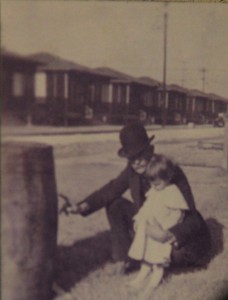
Discovered by Cecil B. DeMille, Keyes was cast in a few lesser known pictures until she landed the role of Suellen, Scarlet O’Hara’s sister, in the movie Gone with the Wind (1939). She then went on to star in other motion pictures, including The Jolson Story (1946), The Prowler (1951), and A Thousand and One Nights (1945), and played Helen Sherman in the classic The Seven Year Itch (1955). She officially retired from acting in 1956 but did take on a few roles in her later years.
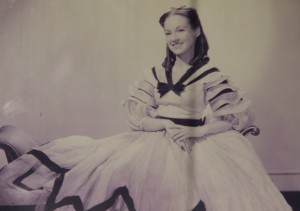 Keyes’ private life appeared similar to that of a Hollywood script. Her first husband committed suicide in 1940. After divorcing her second husband, director Charles Vidor, after two years, she married director John Huston. The couple adopted a boy that Huston had discovered in Mexico while filming The Treasure of the Sierra Madre. Unfortunately that marriage failed as well, and they were divorced in 1950. After her retirement from film, she married bandleader Artie Shaw in 1957. That marriage would last 28 years.
Keyes’ private life appeared similar to that of a Hollywood script. Her first husband committed suicide in 1940. After divorcing her second husband, director Charles Vidor, after two years, she married director John Huston. The couple adopted a boy that Huston had discovered in Mexico while filming The Treasure of the Sierra Madre. Unfortunately that marriage failed as well, and they were divorced in 1950. After her retirement from film, she married bandleader Artie Shaw in 1957. That marriage would last 28 years.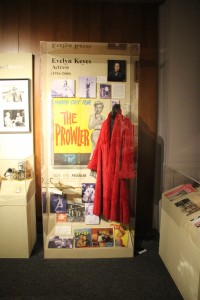
In her later years, on occasion, Keyes traveled back to her birth city and donated memorabilia from her career to the Museum of the Gulf Coast. Unfortunately, she was diagnosed with uterine cancer, and at the ripe old age of 91, succumbed to the retched disease at her home in Montecito, California. She died on July 4, 2008.
She now rests in her birth city of Port Arthur, but when scanning the old stones from Greenlawn or the Calvary cemeteries, I found no mention of her. This is because, “it was her last wish that, upon her death, her ashes be placed in a lamp, similar to the one she emerged from when she played a genie in the 1945 film A Thousand and One Nights.”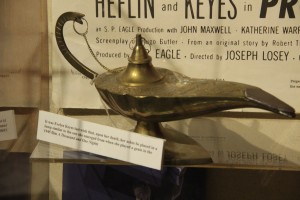
When you visit the Museum of the Gulf Coast, you will find that there is a lot to see. But remember when you are strolling through the Evelyn Keyes exhibit that you are, for all intensive purposes, walking through hallowed ground.
The Mysterious Little Stone
At the very back of the southeast corner of Magnolia Cemetery stands a small headstone shaped almost like a Japanese or Chinese temple. Indeed, the characters adorning the front of the stone support the view that it is oriental. Unfortunately, Asian alphabets are not my forte so I will have to leave it to the experts to figure out the translation of this interesting piece of our SETX history. 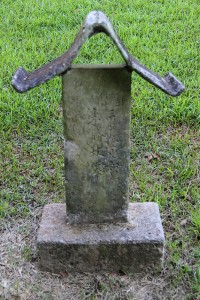
The stone is from the turn of the 20th century, give or take a decade. Regrettably, there are no records for this stone since it is so old. However, looking back at SETX history we did have a few wealthy Japanese farmers who lived and tended their rice fields around this period, but at the time of writing, I only know of one buried at Magnolia Cemetery: the infant son of Yoshio Mayumi.
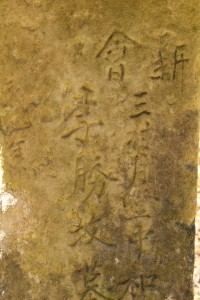 One evening in early December Mayumi rode horseback up to the Bailey Wingate home. For days it had been raining a cold drizzle, and the roads were under water. Apologizing for what he said was an intrusion, Mayumi explained that his first child, a son. Had been born, but after only one day of life, the baby was dead. Mayumi needed help.*
One evening in early December Mayumi rode horseback up to the Bailey Wingate home. For days it had been raining a cold drizzle, and the roads were under water. Apologizing for what he said was an intrusion, Mayumi explained that his first child, a son. Had been born, but after only one day of life, the baby was dead. Mayumi needed help.*
As the story goes, Mr. Wingate’s widowed mother aided Mayumi’s young bride and helped prepare the baby for burial. Two days later, on December 13, 1917, the baby was buried in Magnolia Cemetery. Why the baby was buried in Magnolia Cemetery and not in a cemetery closer to the Mayumi farm in Fannett is not clear.
On reading the story of the Mayumi family, I was convinced that this old headstone at Magnolia Cemetery was that of the infant Mayumi, but Jimmy Sparks, Magnolia Cemetery, pointed out where the actual headstone of the child is.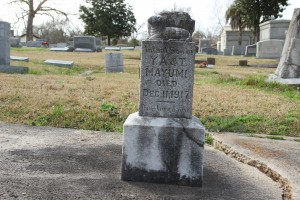
With the child’s true whereabouts now known, Mr. Sparks brought another interesting story to my attention.
In a lone paragraph in a San Francisco newspaper dated December 30, 1902, there is an alluring bit of information that could possibly account for the origin of the stone.
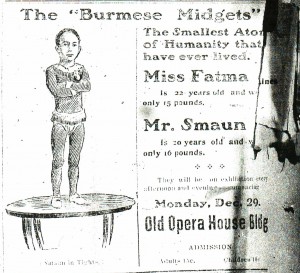 DEATH COMES QUICKLY TO A LITTLE WOMAN
DEATH COMES QUICKLY TO A LITTLE WOMAN
BEAUMONT, Texas, Dec. 29.— Fatma Sing Hpoo, reputedly the smallest person in the world, died very suddenly here this afternoon. She and her brother, Smaun Sins Hpoo, were on exhibition, and after the afternoon performance Fatma became ill and died at the Crosby House before the doctor could reach her. She was 22 years old, weighed 15 pounds and stood 28 inches high. **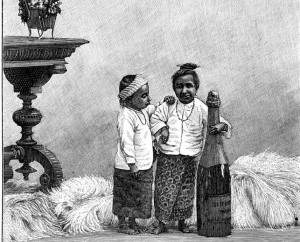
I have come across a few photos of Fatma and her brother Smaun, but there is little, if any, other information about the life and times of the Hpoos. I did find an ad in the Beaumont Enterprise from the day before Fatma’s death, as well as an article in the Beaumont Journal dated January 3, 1903, stating that this would be the last day to see Smaun perform. That short article speaks of a reality that is more mysterious than an unidentified headstone.
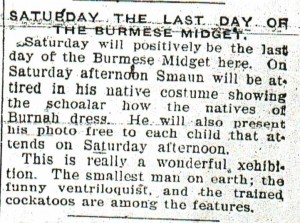 Sadly, the show must go on. We may never find out who is buried under that headstone near the tree line in Magnolia Cemetery, but now that we know of it, there is a small chance that its owner’s identity might one day be revealed. Nevertheless, we will continue to search for further Tales from SETX’s Hallowed Grounds.
Sadly, the show must go on. We may never find out who is buried under that headstone near the tree line in Magnolia Cemetery, but now that we know of it, there is a small chance that its owner’s identity might one day be revealed. Nevertheless, we will continue to search for further Tales from SETX’s Hallowed Grounds.
Sources: * – Southeast Texas Rice Beckoned Japanese by Gwendolyn Wingate Beaumont Enterprise
** – San Francisco Call newspaper
Jimmy Sparks Magnolia Cemetery, Beaumont Enterprise, and Beaumont Journal
Heritage House Museum (Orange Texas)
After a few weeks of cold winter weather, I was ready to shed my cabin fever and explore. While in Orange, Texas, near the Lamar State College-Orange, I happened upon the Heritage House Museum. I’ve known about this house-museum for a while, but time constraints and scheduling hampered my ability to visit it sooner. A visit was therefore long overdue.
As we entered the house, I couldn’t help but compare it to the Vuylsteke House (Port Arthur) and Chambers House (Beaumont). These three houses share a similar quality: unlike the vast wealth, multiple china plate settings, and dark wood of the Stark House, most of you reading this blog would probably be able to see yourselves or your descendants living in these houses. For this reason, they are definitely my favorites. It’s kind of like going back in time and visiting Grandma. 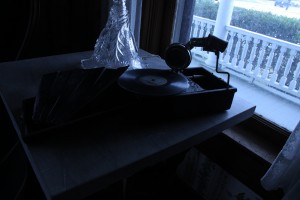
The Jimmy Ochlitree Sims home was originally built on Front Street in Orange but was moved in 1975 after it was acquired by the City of Orange. According to the Heritage House Museum’s website, the house was “given by contract to the Heritage House Association of Orange County, with the provision the house would be moved and renovated as a historical museum for Orange County.” The house was thus restored to its 1919 splendor. Most of the furnishings are from the Sims family, but there are some items that have been donated by the community over the years.
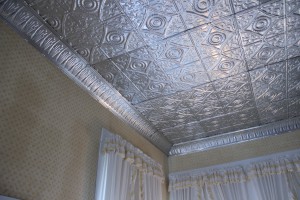 One of my personal highlights is the small phonograph on display. I’ve seen many Victrola’s but never one like this. Another favorite is the tin ceiling in the kitchen. Again, I have never seen this type of craftsmanship before.
One of my personal highlights is the small phonograph on display. I’ve seen many Victrola’s but never one like this. Another favorite is the tin ceiling in the kitchen. Again, I have never seen this type of craftsmanship before.
There are so many beautiful pieces and furnishings throughout this house that they should be seen in person to fully appreciate them. As I mentioned earlier, these types of houses are my favorites and love to visit them regularly—and so should you! 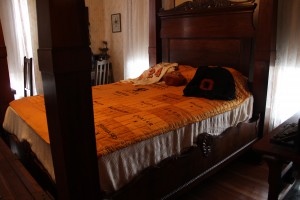
The Heritage House Museum of Orange County is located at 905 W. Division Street Orange, Texas.
Museum tours are conducted Tuesday through Friday from 10:00AM – 4:00 PM. Group tours must be scheduled by appointment. Phone (409) 886-5385 to arrange a group tour.
Admission
Adults $3.00
Adults 50+ $2.00
Students $1.00
Children’s Groups $.50
Members Free
Source: Heritage House Museum of Orange County
Please also visit our Flickr page for photos of this tour and our tour of the Lutcher Memorial Building.
Lutcher Memorial Building Photo Tour
